Lake trout is a favorite species for many anglers. From finding them in deep depths, to fighting their incredible strength, lake trout offer a type of challenge that many freshwater anglers don’t get to experience often.
For many anglers, this type of fishing is also synonymous with trolling, whether it be a fast troll with a spoon or a slow troll with a jig.
However, I’m here to share an entirely different way to experience lake trout fishing. This method is with light gear, light jigs, and a finesse feel, resulting in one of the wildest fishing experiences of anyone’s life.
Through my own adventure, I not only share with you where we went but what we used, why we used it, and how you can do it too.
THE ULTIMATE LAKE TROUT DESTINATION
Lake Athapapuskow
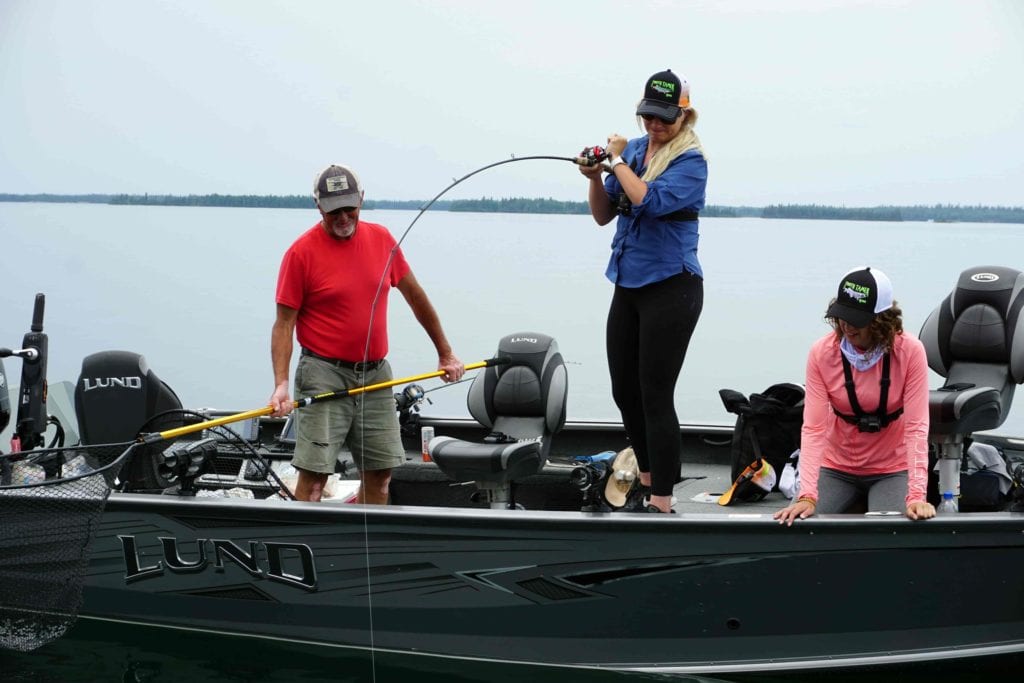
Before going through each part of this technique, it’s important to first understand the context that we were fishing in and how we came across this method.
Nestled in the northern region of Manitoba is a body of water hailed for its multi-species trophy fishery: Lake Athapapuskow. It’s adjacent to the Saskatchewan border and the city of Flin Flon, which is the largest populated area in the region.
Not only is this body of water known for its multi-species opportunity, but it’s also credited with holding the Manitoba lake trout record: a whopping 64 lb giant.
Where We Stayed

For us, the route to Lake Athapapuskow was a 9-hour drive from the North Dakota/Manitoba border – where we crossed over. The road was entirely paved, with infrequent, but sufficient, conveniences along the way.
Once we reached the lake, we cozied in at Bakers Narrows Lodge and Conference Center, a clean and modern fishing resort.
We were provided with a micro cottage, meals, and equipped with a guide (John Wolters). The key here is the guide. John showed us exactly what to use, where to go, and how to catch them.
ON THE WATER
Time of Year
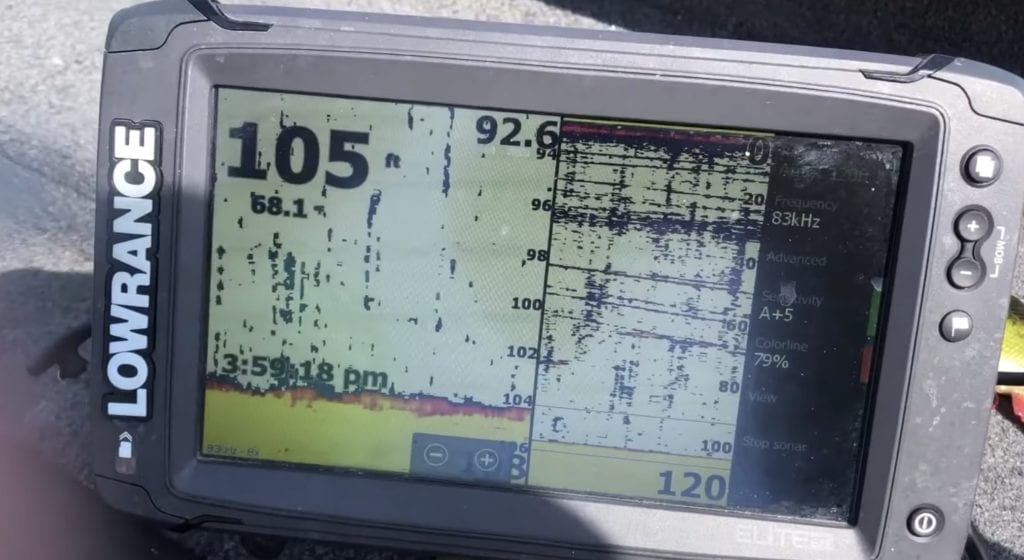
Just like with all fishing, understanding timing is important in understanding fish location.
This adventure occurred during the third week of July, a time when the lake trout are often congregated in the deeps. That’s why it’s no surprise that we set up in a depth that was in excess of 100 feet most of the time.
Days were incredibly long this time of year as well (nearly 18 hours of light), so we were able to have ample time during the day to target trout while still leaving time at night and morning for pursuing other species, such as walleye.
The Conditions

The majority of our time on the lake was comprised of calm, warm, sunny, and steady conditions. Let me emphasize that we had absolutely no trouble catching large numbers of fish with these atmospheric variables.
However, according to John, a rising barometer with just enough wind to produce a slight chop would have been even better. This is something to keep in mind if you need to plan exactly when you want to target these trout.
For us, most of our afternoons were spent chasing lake trout, with our mornings dedicated to pike and evenings set aside for walleye.
The Presentation

The presentation was the most shocking part of all. The experience was lightweight, fast action, and finesse.
In fact, the jig we used was only 3/4 oz in weight and equipped with a size 5 hook. The particular rod I was set up with was a medium, fast action rod, and a budget Abu Garcia Ambassador baitcasting reel. It was an incredibly lightweight setup for such a strong and large fish.
Essentially, we went as light as we could without compromising our ability to hook the trout. It’s also important to note that hooks have to be barbless in Manitoba, therefore successfully landing fish a of this magnitude with this gear has a lot more to do with technique and consistency than simply horsing the fish in.
In fact, the bite was so light that it would have been nearly impossible to detect the fish if using anything heavier.
Below is a prime example of the trout bite. That slight bend on the end of the rod means it’s time for a hook set.

The Bait
The bait that we used consisted of 2 narrow pieces of sucker belly: one was used as the “main” slice of meat and the other was used to cover the end of the hook.
There were two main points to note (according to John):
- Make sure that the bait is narrow and the corners are cut to assure it descends through the water column without spinning
- Make sure there is ALWAYS a piece of meat on the end of the hook to assure they can’t detect it (he coined this term the “cookie”)
If we weren’t catching fish, it was almost always correlated with the “cookie” piece of sucker belly missing. Therefore occasionally reeling up from time to time to check this piece was necessary.
Although it’s tough to see in the image below, the key takeaways are included:
- Long piece of sucker belly
- Hook entirely covered
You can see more on this in the video at the top of the post.
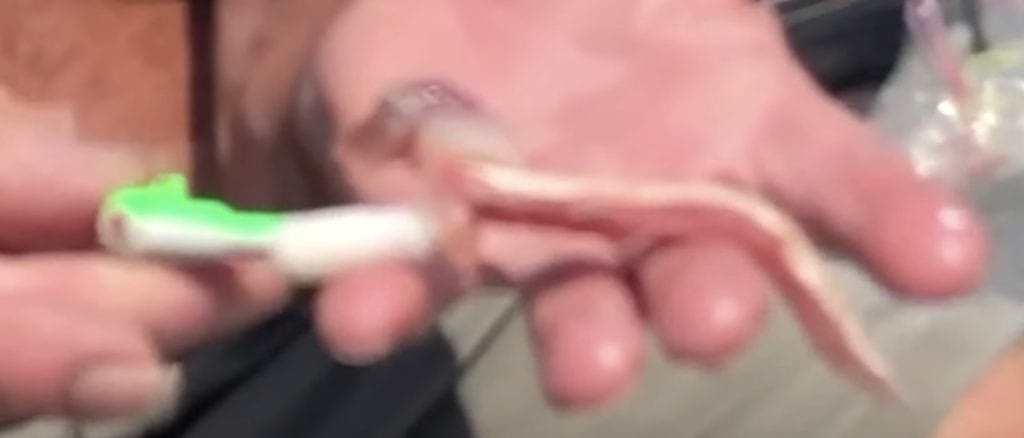
The Technique
Next is to learn the proper technique. This meant leaving the bait on the bottom of the lake. Most of the time the less we would move the bait the better.
Most of the time was spent sitting and waiting until we saw the slightest drop on the end of the rod. Then we’d nail a hard hook set. Therefore, paying attention to our rods was essential for success.
Sometimes the fish would be suspended. It was occasionally worth our time to reel up higher in the column to chase these fish. However, this was the anomaly, not the norm.
Once hooked, it was important to not “bob” the rod, making sure we have tension on the line at all times.
The Experience
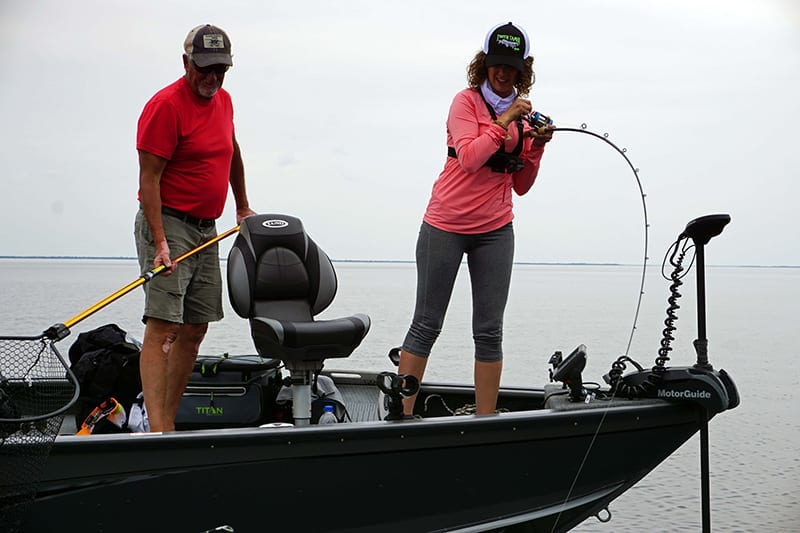
The wildest part of fishing lake trout this way was the experience. Having such lightweight gear meant the bend in the rod was incredible. Each and every hit was a fight a to the top, and sometimes there would be so much action that we would each have fish on at the same time.
As for a comparison, I liken it to sturgeon fishing. With sturgeon, we would leave a pile of worms at the bottom of the water, waiting for a quick bend in the rod, then proceed to have a long and grueling fight to the top.
Vertical jigging for lake trout was similar, but the pay off was much, much more frequent than that. Another bonus was that we were reeling up from 100 feet, not 20.
Of course, I recommend that you try this method on your own; but perhaps one of the best ways to learn it is to head up to the lake yourself.
THE TRIP
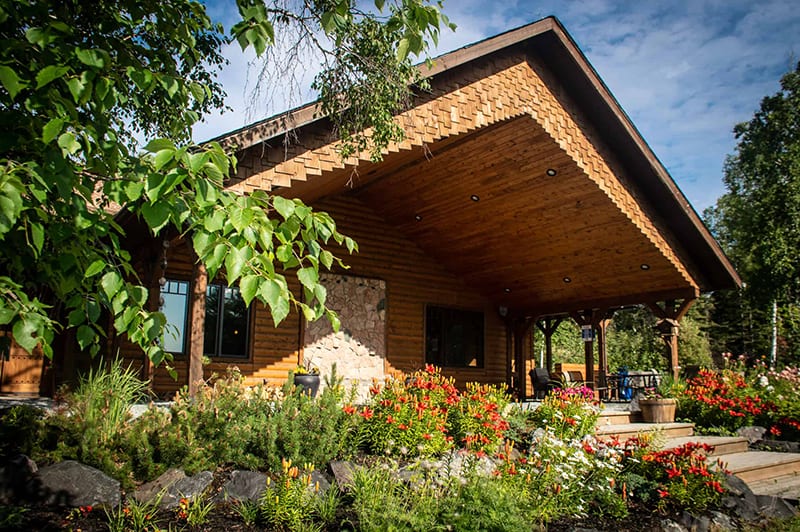
Catching insane numbers of lake trout by vertical jigging wasn’t the only fun in our trip. We also landed numerous trophy walleye, sight fished for pike, and spent all day, every day, out on the water smiling and laughing.
That’s why our trip to Lake Athapapuskow was one of the best fishing experiences I’ve had as an angler.
Of course, no fishing experience is complete without sufficient accommodations.
If you need a place to stay, I highly recommend Bakers Narrows Lodge and Conference Center due to it’s a wide array of price points and all-inclusive options. The accommodations were modern and clean, the personnel was superb and there was plenty of things to do for everyone – even if someone in your party doesn’t want to embark on 14 hours of straight fishing.
Finally, if long drives aren’t your thing, then you’ll happen to note that it’s located next to the Flin Flon airport. This is a huge bonus for those coming from long distances.
FINAL THOUGHTS
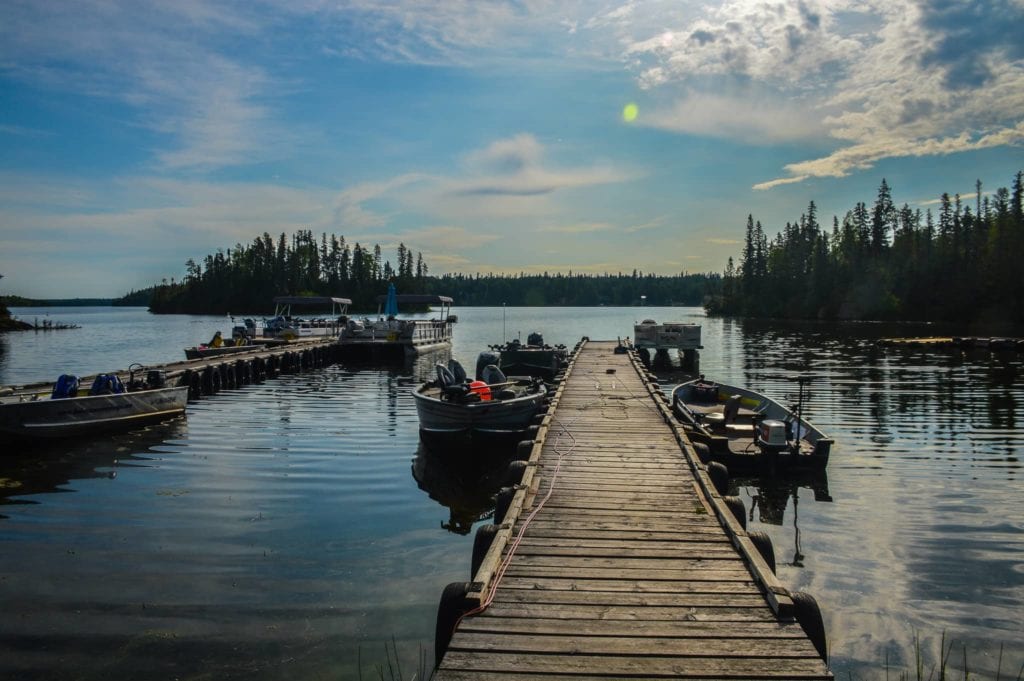
This is definitely a technique everyone can try and a destination anyone can visit.
However, there are a few things you should keep in mind.
If you are new to Lake Athapapuskow, it would be really difficult to break down the lake in only 4 to 5 days. In fact, it’s over 66,000 acres in size with numerous channels, islands, and some incredible structures making it rather difficult to master in a short period of time.
Of course, doing a DIY is entirely possible, but perhaps not the most efficient. If you can wing it, I would highly recommend booking a guide, at least for one day on your first trip. That way you have the lay of the lake, an understanding of the necessary gear, and a few solid spots to run your own adventure.
This will lead to much more success in the long run, and a place you can bring your friends and family to again and again.
You can learn more about the adventures at Bakers Narrows and Lake Athapapuskow here. You can also learn about more opportunities by checking out Hunt Fish Manitoba.
